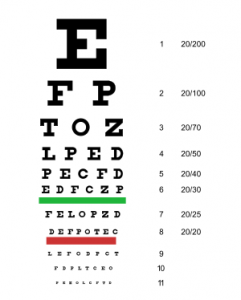In this site you could find the most comprehensive vision care information and products.

Keep your eyes healthy as you visit a doctor regularly!
Between 20-29 years of age, at least in this period. Patients in this age group who are at high risk for glaucoma (family history of glaucoma) should be monitored every 3 to 5 years
Between 30-39 years – once every five years above high risk patients should be screened for 2-4 years.
Between 40-64 years-once in 2-4 years after 65 years – once a year.
Diseases and Disorder
Many eye vision diseases have no early symptoms, so they could be painless, and you may see no change in your vision until the disease has become quite advanced.
- Amblyopia (lazy eye) – it is the medical term for poor visual development and usually occurring in the early stages of life.
- Astigmatism – the distortion of light as it passes through the cornea.
- Cataract – it is a clouding of the normally clear lens of the eye. A cloudy lens prevents light from focusing sharply on the retina.
- Dry eyes – caused for it is a lack of tear production.
- Farsightedness – the opposite condition to myopia is Hyperopia (farsightedness). Instead of an ability to see near objects better than far, the hyperopic eye sees far objects better than near.
- Floaters – they are also called Muscae volitantes (from the Latin, meaning “flying flies”), or mouches volantes (from the French). They may appear as spots, threads, which float slowly before the observer’s eyes.
- Glaucoma – one of a leading cause of blindness among older people is known as glaucoma. It is a specific kind of diseases that damage the optic nerve, the big bundle of nerves that carries the images we see to the brain.
- Keratoconus – it is a degenerative disorder in which structural changes within the cornea cause it to thin and change to a more conical shape than its normal gradual curve.
- Macular degeneration – AMD occurs when a layer under the retina is disrupted by deposits called drusen or other age-related changes.
- Nearsightedness – Myopia is the medical term for ”nearsightedness”, a condition in which the eyes can see close objects but not distant objects.
- Presbyopia – it is an age-related disorder caused by a loss of focusing power.
- Ptosis – a person with ptosis cannot lift one or both of their eyelids all the way, usually because of a malformed eyelid-lifting muscle.
- Strabismus – also known as heterotropia, is a condition in which the eyes are not properly aligned with each other.
- Uveitis – specifically refers to inflammation of the middle layer of the eye, termed the “uvea” but in common usage may refer to any inflammatory process involving the interior of the eye.
Deals
Keepons 1.8mm Anti-slip Adhesive Contoured Soft Silicone Eyeglass Nose Pads with Super Sticky Bac...
WayFarer Reading Glasses 2 Pack Black _ Always Have a Timeless Look, Crystal Clear Vision, Comfor...
New Releases